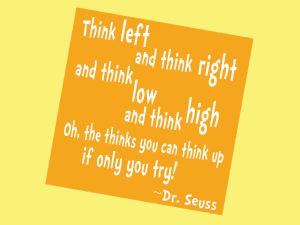AI can be a phenomenal assistant for busy homeschool families—brainstorming project ideas, helping teens plan workflows, or offering on-demand explanations when you’re not right beside them. Used well, it builds independence and frees you up for richer discussions and hands-on learning. Used poorly, it can shortcut learning or create plagiarism headaches. The difference is all about clear guardrails and intentional routines.

Start With a Family AI Policy
Before any tools hit your teen’s laptop, write a simple one-page AI agreement together. Clarify:
- When AI is allowed (e.g., study guides, idea generation, practice questions).
- What’s off limits (e.g., writing graded essays, solving assigned problem sets verbatim).
- How to cite AI assistance (a short note like “Brainstormed outline with AI; all writing is my own.”).
Tie your policy to your broader high school plan so expectations stay consistent across subjects and semesters. Big-picture planning resources help here.
Teach Promptcraft as a Literacy
Treat prompting like a composition skill. Show your teen how to:
- Give context (“I’m studying chemistry, and I’m stuck on understanding chemical reactions.”).
- Set constraints (“Explain in 5 steps, then give 3 practice problems with answers.”).
- Ask for sources and counterexamples (“Cite sources; what common mistake should I avoid?”).
Encourage them to iterate: prompt → evaluate → refine. This habit mirrors how they’ll work in college and careers.
Try It: Prompt Frames Teens Can Reuse
- “Explain this at three levels: beginner, intermediate, and advanced.”
- “Create a study plan for 2 weeks before my test; include daily tasks and a 30-minute cap.”
- “I solved this problem; diagnose my error step-by-step.”
Keep the Learning Human: AI Outside, Thinking Inside
Adopt a simple rule: AI can prep the runway, but the student must fly the plane. AI may help brainstorm lab ideas, build a reading plan, or generate practice quizzes—but the writing, problem-solving, and analysis belong to the learner.
Make It Hands-On: AI as a Lab Partner, Not a Shortcut
Keep AI tethered to authentic work:
- Science: Have AI propose two competing experiment designs, then your teen picks one, justifies the choice, and runs the lab.
- STEM/Robotics: Use AI to outline a build plan, then your teen codes/tests the robot and documents failures.
- Electives & Portfolios: Let AI brainstorm elective pathways (e.g., digital media, entrepreneurship), then your teen curates artifacts in a portfolio.
Build Academic Integrity Into the Workflow
Minimize temptation and maximize learning with structure:
- Prewrite by hand (or in a non-Internet doc) before any AI contact.
- Use AI only for revision prompts (“Point out unclear logic; suggest ways to tighten arguments.”). Then revise in their own words.
- Attach a process note explaining what AI did (if anything).
Studying how syllables, morphemes, and word origins contribute to meaning also strengthens authentic writing and reading.
Practice Source-Checking and Trust, but Verify
Model healthy skepticism. When AI gives an answer, your teen should:
- Cross-check with a textbook or reputable site.
- Find the original source for any quoted fact.
- Spot gaps: “What would change this conclusion?” “What data am I missing?”
Treat AI as a first draft tutor, not a final authority. (Interesting side note: a 2024 education piece observed homeschoolers adopting AI quickly as a brainstorming/management tool—exactly this “tutor” role—while still needing to guard against over-reliance.)
Use AI to Differentiate—Especially for Diverse Learners
AI can personalize supports:
- Convert reading to leveled summaries (then compare to the source).
- Create scaffolded problem sets that grow in difficulty.
- Generate graphic organizers for note-taking or lab reports.
- Offer speech-to-text or text-to-speech workflows for dysgraphia or attention needs (and keep accommodations documented).
Plan, Pace, and Track With AI—But Keep You in the Driver’s Seat
AI can draft a four-year scope/sequence, then you adjust for your teen’s goals (apprenticeship, college, entrepreneurship). Use it to:
- Map prerequisites (e.g., Algebra before Chemistry).
- Draft weekly study sprints with time caps.
- Turn standards into checklists your teen can own.
Use AI to Strengthen Collaboration and Community
High schoolers benefit from learning with peers too. Use AI to:
- Outline study-group agendas (topics, roles, problem sets).
- Generate Socratic questions for lit circles or current events.
- Create rubrics teens can use to peer-review.
Get Creative With Electives and Passion Projects
This is where AI shines. You can ask it to come up with plans for things your students are interested in. For example:
- Digital music production: Ask AI for a learning path, comparison chart, and project checklist—then your teen composes and publishes.
- Entrepreneurship: AI can mock up a business plan, customer personas, and marketing calendar; your teen tests ideas in the real world.
- Capstones: Have AI suggest mentor interview questions, fieldwork logs, and presentation outlines—then your teen drives the work.
Document Everything for Transcripts
Have your teen log AI use alongside hours, artifacts, and reflections. On transcripts and course descriptions, note AI as a support tool, not the content source:
- “Used AI to generate practice quizzes and project checklists; all graded work original.”
- Attach two or three artifacts per course (lab reports, essays, projects).
This transparency builds trust with colleges and future employers and showcases your teen’s independence.
Keep Well-Being Front and Center
AI can accelerate tasks—but teens still need sleep, movement, and real-world experiences. Consider electives that blend physical and practical life skills (PE, service learning, internships).
Bottom Line on AI
AI is a powerful tool—fantastic for planning, differentiating, and practicing—but your teen’s thinking is the main event. Put clear guardrails in place, teach promptcraft and source-checking, and tie AI to hands-on, human work. With that approach, you’ll get the best of both worlds: a more efficient homeschool week and deeper learning that sticks.
Brandi Jordan is a former classroom teacher turned homeschooler. She’s also a certified youth and adult yoga instructor, personal trainer, and youth exercise specialist. When not creating things for her sites, she can be found hanging out with her three kids, hubby, and a menagerie of pets.



